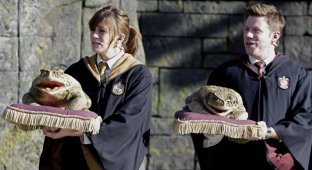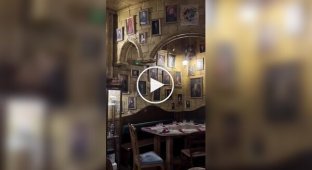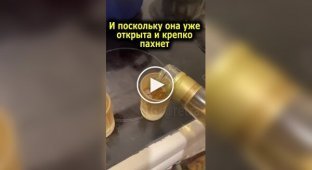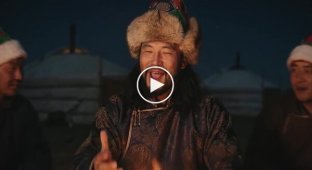Historian reveals origin of butterbeer from "Harry Potter" (5 photos)
Harry Potter fans have a little holiday. 
Even if you are not a fan, but at least once watched some movie about the adventures of a boy with a scar on his forehead in the world of wizards, then you probably remember that young wizards often indulged themselves with butterbeer.
Joanne Kathleen Rowling herself claimed that the recipe for butterbeer was purely her fantasy. But not everything is so simple in this world. Frankly speaking, it is difficult to call this drink beer now, because by and large it is just a sweet cocktail based on ice cream and melted toffees. It is called beer because of its persistent milk foam and yellowish-cloudy color. 
In its modern version, the cocktail is non-alcoholic, since it is prepared mainly for children, of course, there are recipes for adults, turning the mixture into a low-alcohol drink.
The recipe is taken from the English-language Internet:
Regular butter beer
1 cup of thick whipping cream
1/4 cup of powdered sugar
1/2 tsp. vanilla extract
salt
1 tbsp. butterscotch
2 tbsp salted butter
4 tbsp butterscotch
4 cups cream soda
But if you read Harry Potter carefully, there are several indirect signs that indicate that Butterbeer may be low in alcohol.
"Harry took a long sip. It was the most delicious drink he had ever tasted, and it seemed to warm every part of his body from the inside out."
This "warming effect" is often attributed to drinks with low alcohol content. 
Meticulous fans dug into the archives and found an original English recipe from the Tudor era. It is known that Henry VIII was a fan of "Butterbeer". And this drink was weak, but alcoholic. According to the recipe from 1594, the drink was prepared by heating and mixing beer, chicken yolks, cane sugar and butter with the addition of spices (nutmeg, ginger and cloves).
But not only the English loved butterbeer. 
Gomel beer enthusiast historian Stanislav Pridybaylo looked through the archives and found out that the Belarusians also had their own analogue of this drink and it was called "gramatka". The historian even brewed "gramatka" and compared it with the description in books - the taste matched completely. You can read the full study on this topic here.
In Belarus, Lithuania and Poland, whose roots go back to the era of the Grand Duchy of Lithuania and the Polish-Lithuanian Commonwealth, they brewed this drink and noted that it also had healing properties. 
Adam Mickiewicz mentions Gramatka in his poem Pan Tadeusz. Along with the main ingredients (beer, butter, sugar, egg yolks, ginger) there is a variation of spices (cumin, cinnamon or nutmeg).
So everything new is just well-forgotten old.

























